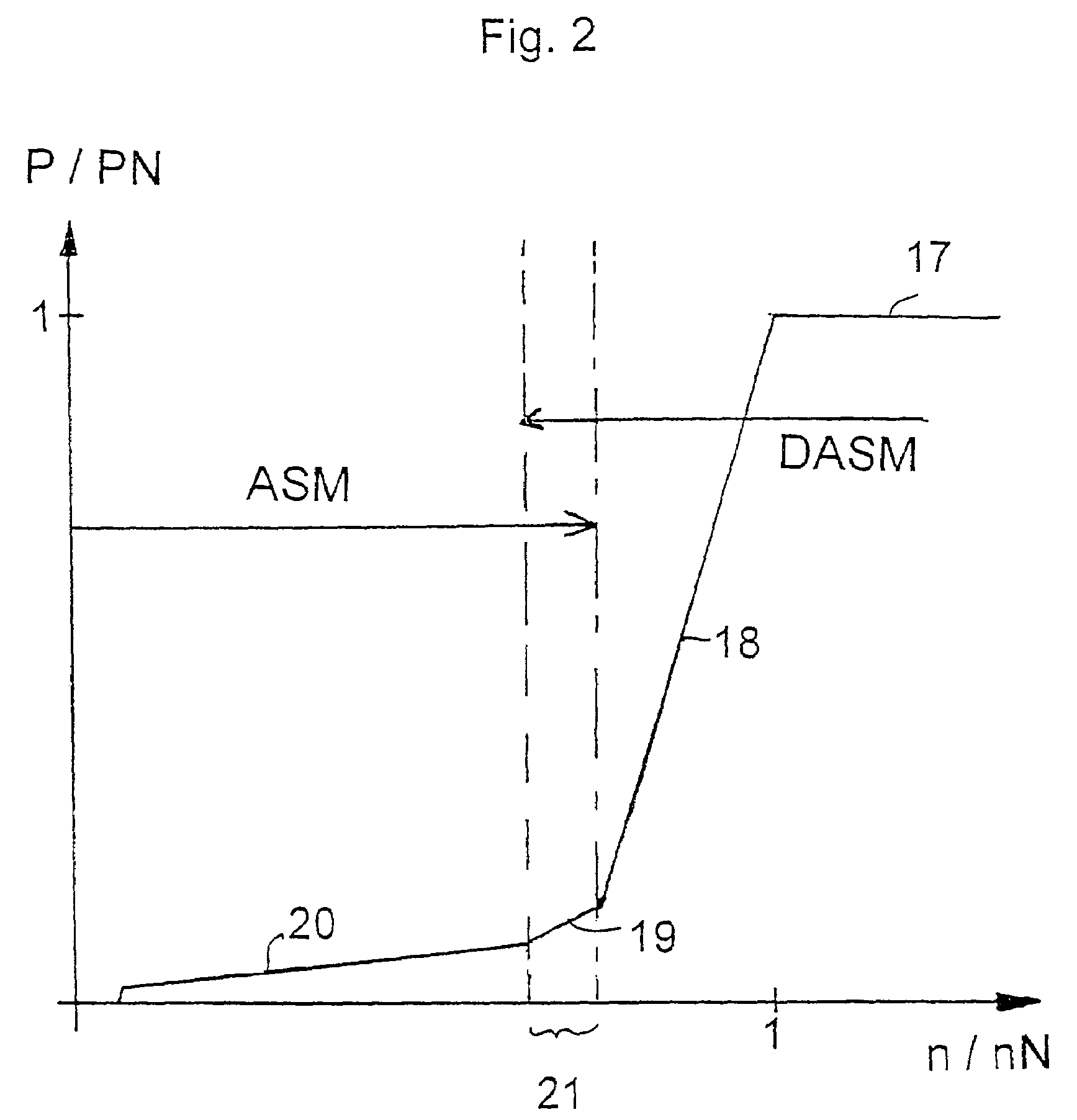Operating method for a wind turbine with a supersynchronous cascade
a supersynchronous cascade and wind turbine technology, applied in the direction of variable speed operation control, electric generator control, dynamo-electric converter control, etc., can solve the problems of increasing the difficulty of equalizing short-term power variations in utilities, increasing the difficulty of increasing the difficulty of short-term power variations, and increasing the need for reactive power, so as to improve the current quality and ensure the effect of efficient production of electric energy
- Summary
- Abstract
- Description
- Claims
- Application Information
AI Technical Summary
Benefits of technology
Problems solved by technology
Method used
Image
Examples
Embodiment Construction
[0033]The wind energy system according to the invention that is shown has a mast 1 that is anchored in the ground and a rotor 2 having three rotor blades that are mounted at the top of the mast 1. The rotor blade angles are configured to be adjustable relative to their longitudinal axis. The rotor 2 is mechanically connected with an electric asynchronous generator 3, by way of a gear mechanism. The stator 4 of the generator 3 is electrically connected with the network 8. In this connection, the network frequency and the frequency generated in the stator are synchronized with one another. The rotor 5 of the generator 3 is connected with the converter array 6 by way of the lines, which array in turn is connected with the lines between the stator 4 and the network 8. The slip power generated by the generator is fed into the network with the converter array 6. The slip power of the rotor and therefore the speed of rotation are controlled variably. The power to be fed into the network 8 ...
PUM
 Login to View More
Login to View More Abstract
Description
Claims
Application Information
 Login to View More
Login to View More - R&D
- Intellectual Property
- Life Sciences
- Materials
- Tech Scout
- Unparalleled Data Quality
- Higher Quality Content
- 60% Fewer Hallucinations
Browse by: Latest US Patents, China's latest patents, Technical Efficacy Thesaurus, Application Domain, Technology Topic, Popular Technical Reports.
© 2025 PatSnap. All rights reserved.Legal|Privacy policy|Modern Slavery Act Transparency Statement|Sitemap|About US| Contact US: help@patsnap.com



